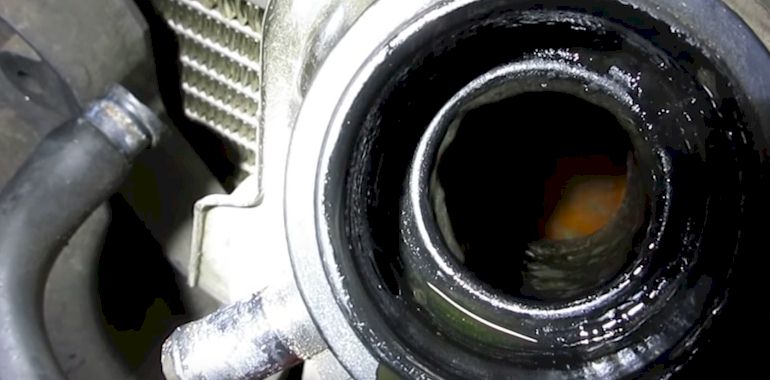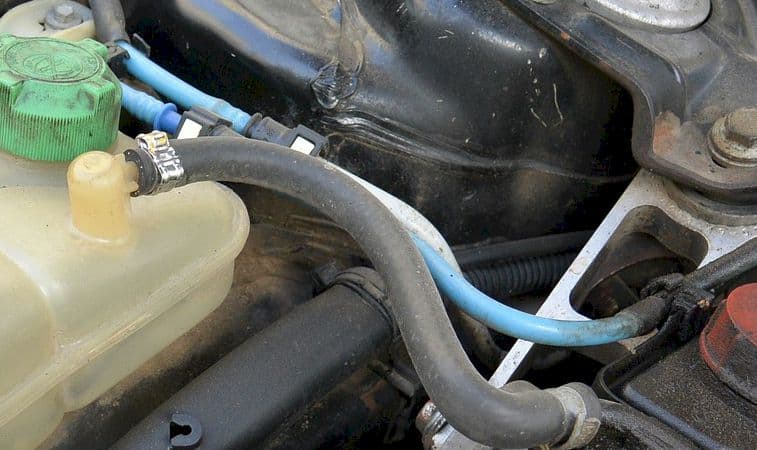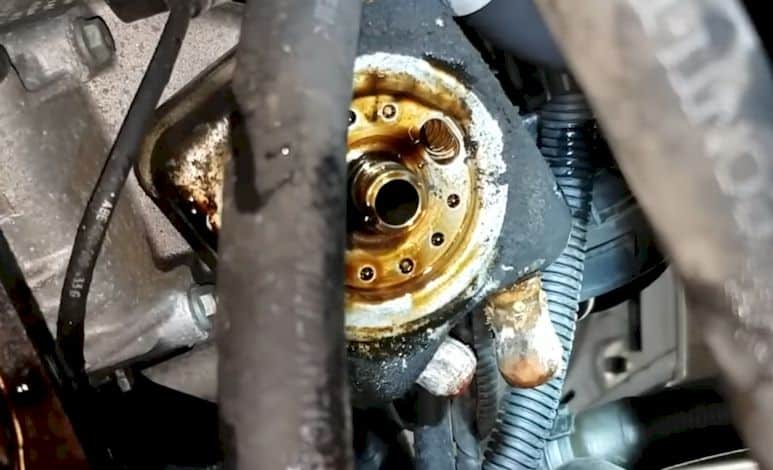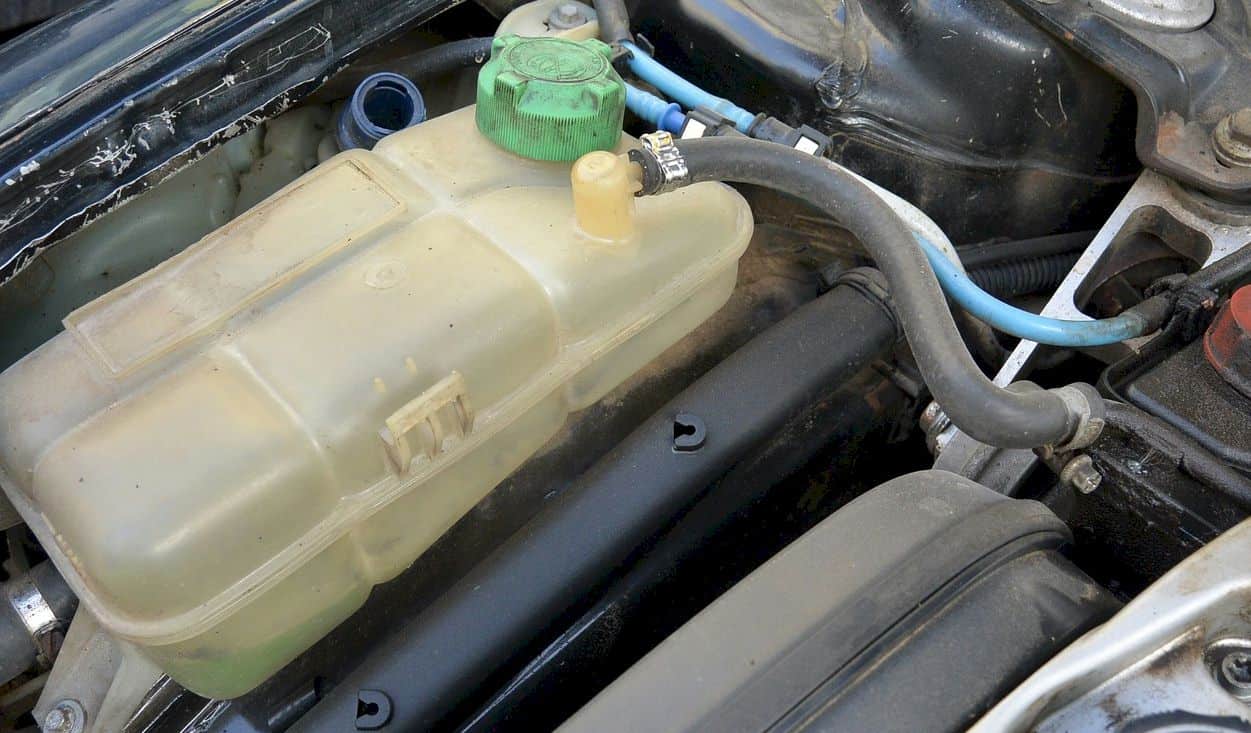When there is oil in the coolant reservoir, it is an indicator that there is a problem. If left unaddressed, it may even result in more serious issues, such as engine malfunction.
Three Main Causes of Oil in Coolant
1. The head gasket is damaged
The coolant and the oil are carried to your engine through two separate and distinct channels. One channel directs the engine oil to the various parts where it is needed. The other performs the same function, but for the coolant, which is directed to the cooling system.
The coolant and oil are kept separate by the head gasket of the engine, which prevents them from mixing in the combustion chamber. Besides, this part also helps the engine to achieve high combustion.

If there is oil mixing with coolant, it may indicate that the head gasket is damaged. You can detect this by using your dipstick to check your oil level. If the dipstick has froth, it may be an indicator that there is coolant in your motor oil.
The signs that may indicate there is a blown head gasket:
- The engine overheats regularly. You can check by monitoring your engine temperature gauge.
- Losing coolant. Instead of mixing with motor oil, the coolant may simply leak out of the engine. You can detect this by checking your coolant levels.
2. Cracked cylinder heads.
Internal combustion engines contain cylinders where air and gas mix to spark combustion. These cylinders have caps or heads that contain the gas-air mixture and the combustion process. They also open to vent the exhaust gases the process produces. The caps open and close thousands of times per minute.
After several years, the heads are at high risk of cracking. When this happens oil may leak out. Also, since there is coolant around the cylinder heads to keep them cool, your coolant levels may drop. This is in addition to finding leaked oil in the coolant.
Cracked cylinder heads will also cause your engine’s performance to decline. This is because the compression process is no longer being performed optimally. The problem may even become so severe that your engine may often quit and need to be constantly restarted.
Less frequently, you may see smoke in the engine. The reason is that the cracked head allows exhaust gases to enter the cylinder. If you see this, the crack is severe and needs to be repaired as soon as possible.

Read Next: Metal Shavings in Oil
3. Cracked engine block.
The engine block is where many important components in the running of the engine are found. These include the cylinders where combustion takes place, as well as the channels through which oil and coolant pass to get to the engine. It is made of a solid piece of metal, usually cast iron or an aluminum alloy.
The engine block is subject to powerful stress during the car’s normal operation due to the temperature extremes it experiences. If the engine overheats, it can cause cylinder heads to warp and, eventually, crack. If the engine freezes, the antifreeze expands, which can cause the engine block to crack.
As a result of these stresses, the engine block suffers from huge stresses in various areas. Eventually, small cracks may develop. Once an engine block has started to crack, the process is nearly impossible to stop and the cracks will quickly get bigger.
If the cracks are external, then motor oil and coolant will start to leak and mix. If the cracks are internal, on the other hand, you will see oil in antifreeze since the channels where these two fluids pass through has become damaged.
Hence, it can be very difficult to detect a cracked engine block until the problem has become very serious. The signs that this has happened are:
- The coolant and oil dripping from the engine onto the ground.
- The engine is overheating.
Since the engine is leaking coolant or antifreeze, it may start to overheat since there are not enough of these essential liquids circulating to cool it down. In addition, you may see white smoke coming from the engine.
- The engine emits gray-black or blue smoke.
This happens because passes through the cracks in the engine block rather than through the exhaust system.
- The engine starts to perform poorly.
If the cracks are located in the part of the engine where the combustion process happens, then it may lose power. You may notice that your fuel economy has become less efficient and the car handles roughly while idling.

Related: Oil in Intake Manifold
What happens when the Coolant Mixes with Oil?
Motor oil is essential in ensuring that your car continues to run smoothly. It acts as a lubricant that reduces friction in the internal parts of the engine.
Since the engine generates a lot of heat when running, it also requires coolant. This fluid is intended to control the temperature of the engine and prevent it when overheating. It is stored in a reservoir in the engine bay.
As the coolant absorbs heat from the engine, it expands. Excess coolant is captured in the overflow tank so it won’t leak. Once it cools down and contracts, the coolant is returned to the engine.
These two fluids should never mix. It will result in them becoming diluted, which will prevent them from performing their function in the engine. This may cause overheating.
What to Do When You See Coolant Mixes with Oil?
When you see oil and coolant mixing, it is always a sign that there is a serious problem with your engine. Thus, you need to take it to a mechanic to have it checked out. If the problem is detected early enough, your repair bills may not be that serious.
Regular maintenance of your car, including tune-ups, is also essential in ensuring that problems with your engine are detected before they become too bad.
However, if your engine block has cracked, this is a very severe problem that may cost thousands of dollars to fix since you may need to replace the entire block. In this case, you have to decide if repairs are worth it or if you will simply buy a new car.
How To Fix Coolant Mixing With Engine Oil YouTube Video
James is a certified auto technician specializing in commercial vehicles. With 30 years of experience under his belt, James has encountered almost every type of automotive issue there is! Besides his day job at the repair shop, he is also an amateur race car driver.

thanks its profound
Uhhhh
Pretty shortsighted and potentially a huge money and time waster..
Oil coolers fail, replace for under $100
Trans cooler fails, leaks in radiator- $200
I towed my 2006 ford van to the dealer after breaking the spark plug porcelain on #2 ,to see if some had falling into the spark plug hole,it turned out that the Ford technician broke off the view probe inside the engine,a small job turned into a big one,they took the motor out and removed the head to remove the probe with no cost to me,I droved my van with thire permission,while the work is still under warranty the engine oil is getting into the coolant reservoir.it’now back at the Ford co.